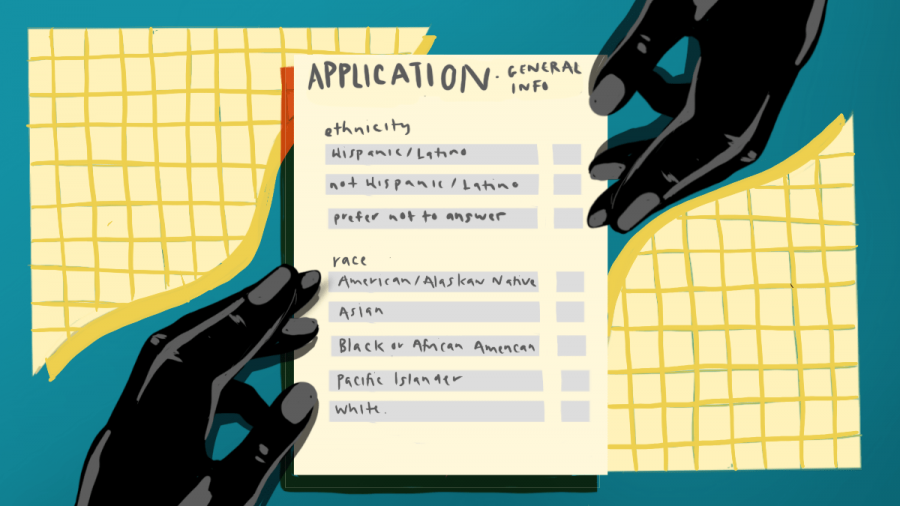Proposition 16: The Repeal of the Ban on Affirmative Action
Recently, Proposition 16 was voted to continue the ban on affirmative action in California.
November 21, 2020
California’s Proposition 16 is about the end of the ban on affirmative action. If it were to be passed, schools and public agencies could consider race, ethnicity, and sex in admissions, hiring, or contracting decisions in California once again. However, the proposition was recently voted to keep the ban intact with 57% voting no and 43% voting yes (Associated Press).
Many believed this proposition would bring equal opportunity to all Californians for those who voted yes in repealing the ban. For instance, fair wages, good jobs, and quality schools would be available for everyone, and voters believed Prop 16 would fight wage discrimination and systemic racism, opening more chances for women and people of color. Voting yes for this would mean state and local organizations could consider race, sex, color, ethnicity, and national origin.
On the contrary, those who opposed believed that this proposition does not treat all Californians equally due to discrimination and preferential treatment based on their race or gender. Opposers who voted no would want to keep the current ban on race, sex, color, ethnicity, and national origin to stay in effect. Haley Yoon (10) thinks how people “need to consider both the pros and cons of passing Prop 16 because of how impactful it can be on minorities.”
In 1998, Proposition 209 was repealed, stating that one can not be discriminated against based on race, sex, color, ethnicity, or national origin in employing public education or contraction. Therefore, Proposition 16 was a response to bring back situations such as affirmative action in California but ultimately was unsuccessful. This resulted in California continuing to be one of eight states where affirmative action is illegal. A study has shown that at UC Berkeley and UCLA comparing 1995 vs. 2019 (a period where affirmative action was permitted, and one where it was not) demonstrated that enrollment declined of Black, Latino, and Native Americans after affirmative action was forbidden (UC Office of the President).
Affirmative action is the act of giving special access to opportunities typically towards minorities or a group that has been previously discriminated against. Originally, affirmative action was a method for colleges to provide special consideration to racial minorities to undo previous discrimination. However, this act has received significant backlash from opposers since they believe that while it gives opportunities to historically discriminated against groups and helps open chances to jobs and schools, this act is not of equality of opportunity.
In the past, the UC Davis medical school offered spots to 100 students every year. 16 of those spots were reserved especially for those who qualified for affirmative action (racial minorities). This led to others believing that less qualified people could be accepted due to being a minority resulting in the Supreme Court case of the University of California vs. Bakke in 1973.
Bakke, a student who was rejected from the UC Davis medical school twice, sued because he thought he was discriminated against because he was white and was not eligible for the 16% of limited spots. The Supreme Court ultimately agreed with Bakked that racial quotas should not be allowed since it did not provide equal opportunities. Therefore, the new ruling stated that schools or organizations may not use affirmative action to undo past discrimination but can use it to create a diverse student body. Although racial quotas were not permitted, the topic of race can be used as an “extracurricular” such as being a member of the Black Student Union or president of the Latino culture club.
Also, Harvard has received backlash for appearing discriminant against Asian applicants. Harvard uses a system of scoring each applicant in different categories and comparing white applicants to Asians; it has been recorded that Asians score lower on a personal score. However, Asians typically score higher on the academic score, leading to raised eyebrows about this case, which eventually went to court.
Therefore, with Proposition 16 continuing to ban affirmative action in California, although about half who voted are satisfied with this decision, others remain to disagree. However, with differing opinions about this issue and bickering continuing, the fate of affirmative action for future generations is unknown.




































danielle huizar • Dec 8, 2020 at 12:54 PM
This was a great article, as you included both sides of the opinions on Prop 16. I also liked how you included the history of affirmative action and an explanation about what affirmative action is.